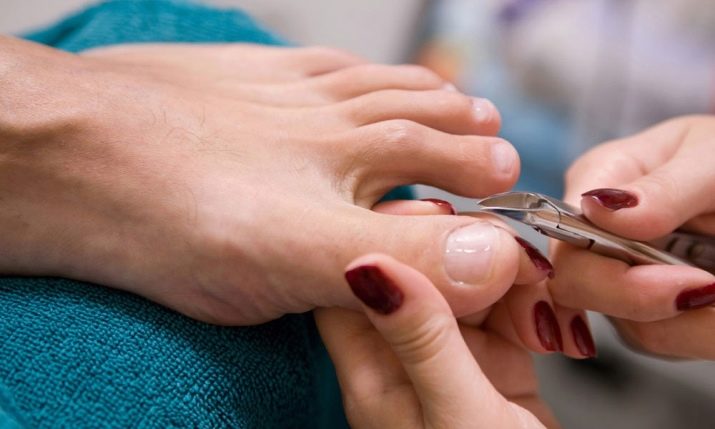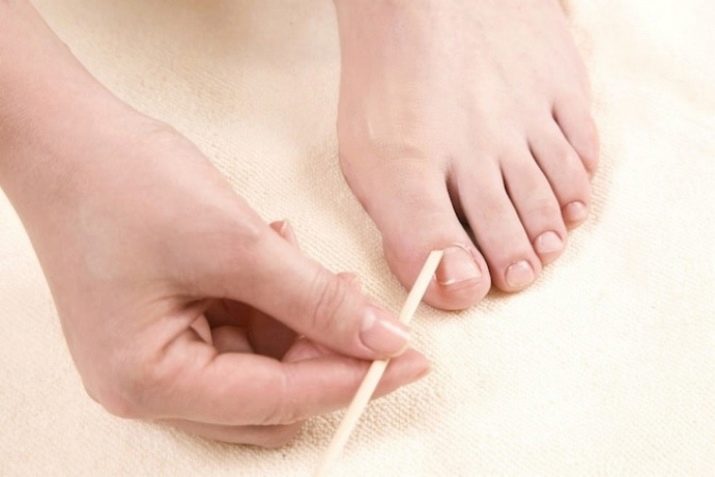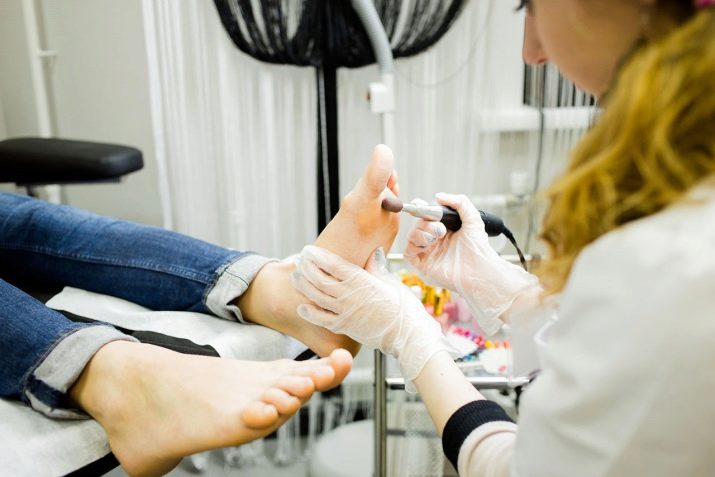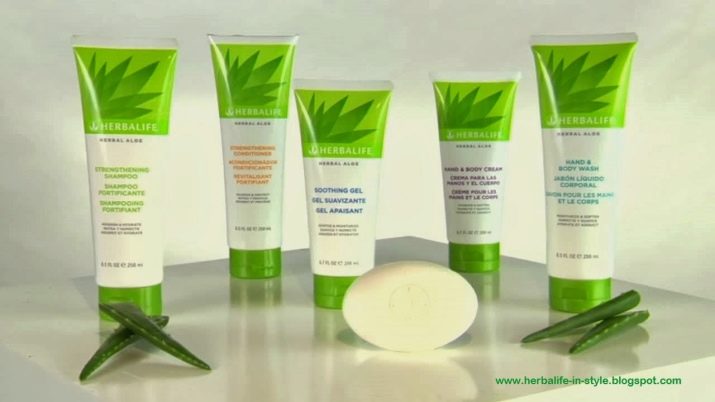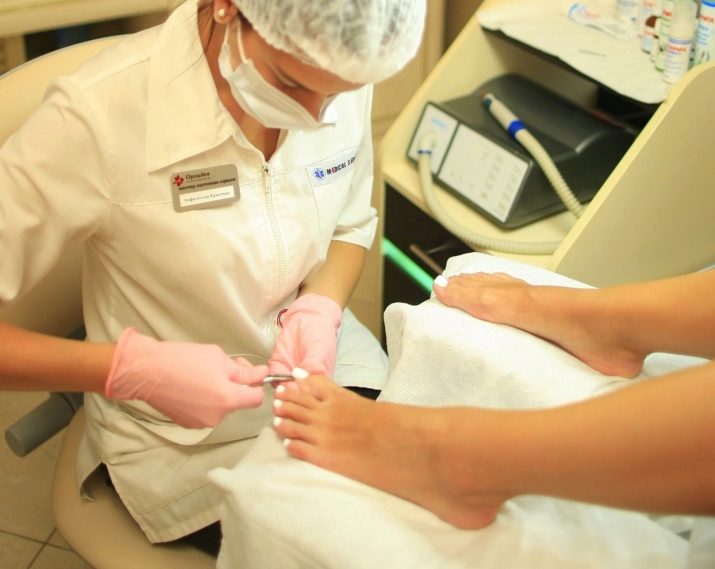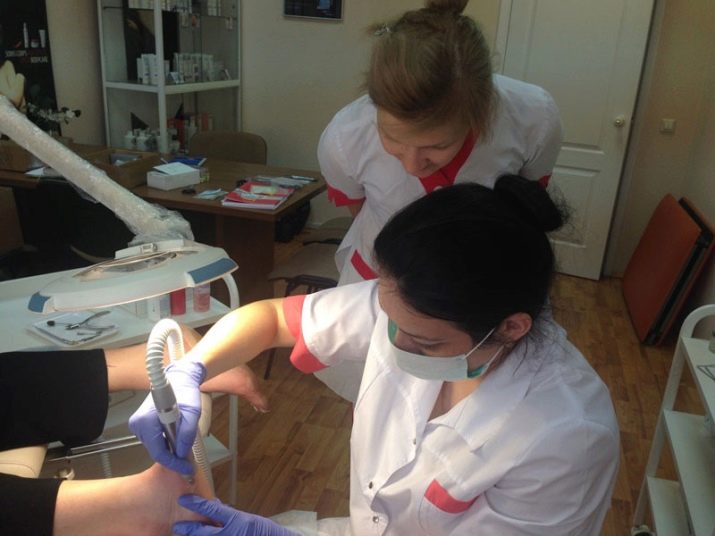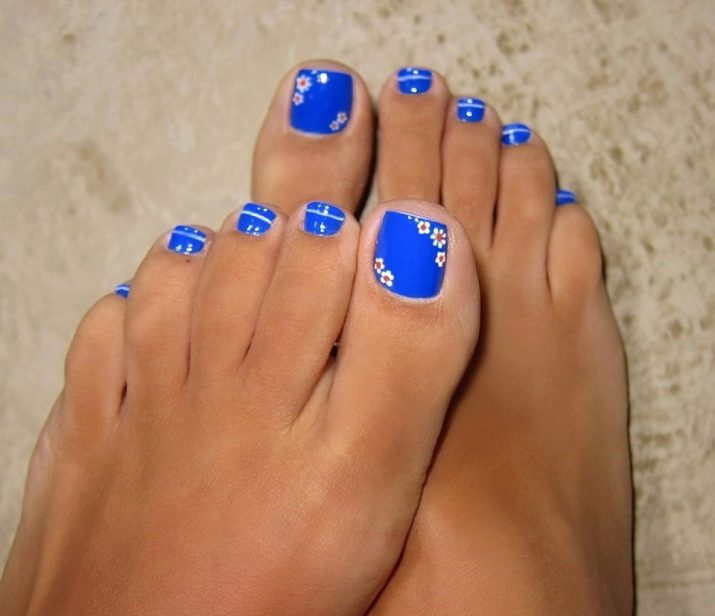Professional pedicure: a review of techniques and tools for the procedure

It is impossible to leave feet without attention and care. Appearance, walking comfort and health depend on caring for them. You can take care of them at home, but professional pedicure is preferable.
Features
Pedicure is one of the procedures for body care. Without well-groomed legs, an image of a neat and beautiful girl cannot be created. Professional pedicure has a number of features that distinguish it from home.
- giving an esthetic look to legs rather quickly (in 40-60 minutes);
- performing the procedure by a specialist who will not do anything extra and will not harm;
- maintaining skin hygiene;
- year-round foot care;
- prevention of fungus formation;
- protection against ingrown nails;
- removal of ingrown nails;
- callus elimination;
- foot deformity prevention;
- warning flatfoot;
- elimination of skin residues that clog the space under the nails and create a favorable environment for the reproduction of dangerous bacteria.
Basic technology
There are two main types of professional pedicure: the first - a classic, and the second - hardware. By doing this or that procedure, they take care of the nails and feet in a complex manner and prevent the development of dangerous fungal diseases. Although the main types of two, but the technique based on them a lot. Each of them has its own characteristics.
- Classic
In contrast to the hardware pedicure classic involves manual care for the skin of the feet. The procedure is popular with masters and girls who are accustomed to caring for themselves (or who do not have money for salon procedures). To make a classic pedicure, you need the following tools:
- scissors;
- file;
- pumice;
- forceps.
Before you carry out the removal of hardened heels, the skin of the feet is cleaned, softened by immersion in a soap solution with the addition of salt. Then they pick up pumice and rub heels to remove an untidy rough “crust”. After that, the cuticles of the nails are separated by cutting or moving away with a special wooden stick, the feet are treated with a scrub. If the client wishes, then after polishing her nails are painted. The procedure is considered complete when a nourishing cream is applied to the foot and its light massage is performed.
A good master never shortens the nail plate "under the root", leaving a noticeable edge of the nail. He does so not because it cannot be otherwise, but to prevent the ingrowth of the nail into the skin.
- Japanese
Japanese pedicure has one fundamental difference from all other techniques. Making it, the master uses natural and natural remedies (scrubs, herbal solutions, mineral substances, polishing pastes, base and essential oils, bags of herbs). He does not process even the roughest skin of his feet with tools made of metal and synthetic devices. With the help of a gentle and delicate Japanese pedicure, they heal disturbing small wounds on the legs, remove cracks, soften coarse areas of the skin, and remove corns and calluses.
- European
The European pedicure has one caveat: by arranging the foot, the master never cuts the cuticle, does not use water and metal tools. He works with special cosmetics. From their use, the skin and cuticle soften. Applying a scrub, clean the parasols, calluses, and if it does not help, apply pumice.After applying the oil affect the cuticle, pushing it with an orange stick. After staining the nails, a cream is applied to the foot.
Girls are reluctant to sign up for a European pedicure. Not everyone likes that the cuticle is pushed aside, not cut. Clients are afraid that the nails will soon look untidy. But if you do this pedicure regularly, the cuticle will become thinner and the nails will not get a sloppy look even after three weeks.
- Hardware
Apparatus pedicure is popular with girls with thin skin (for example, between the fingers or in the area of the cuticle). Unlike the classic, hardware pedicure is a dry method of treating feet and toes. The master acts on the skin with a special device, which is an electric machine with different cutters. Depending on the model, the speed of rotation and the reverse of the machine differ. In some built-in vacuum cleaner, which is responsible for collecting hardened or keratinized skin particles.
Applying the apparatus for a pedicure, the skin of the feet is polished, not cut, as it happens during the procedure of a classic pedicure. They treat the skin of the feet and heels with wide nozzles (this is better for thick layers of keratinized skin), while thin ones work on the fingers and in the cuticle area (they are intended for “jewelry” work). At the end of the skin treatment, the exposure sites are sanded.
The best remedies for the procedure
From what tools and cosmetics are used when making a pedicure, the result directly depends.
- Butter with mint and sage Tasha
Not always for steaming keep your feet in warm water with shampoo, soap or salt. Tasha oil not only effectively softens the hardened skin, creating the impression that everything happens in the SPA salon, but also accelerates blood flow, fights puffiness, refreshes and removes excessive dryness.
- Organic Kitchen Scrub
It contains natural sugar and pits of white currant, which have an abrasive effect. By applying a tool called "Crystal Slipper" on the feet, they soon notice that traces of peeling and dirt on them have disappeared. Other ingredients - rose and cranberry oil - make the skin smooth and soft. The maximum effect is achieved if you hold the legs in the water before applying it.
- MIKO nail oil
MIKO fatty oil cares for toenails. Lemon is one of the components of this remedy that is responsible for giving them a healthy glow. It also contains rice bran oil, which helps to soften and slow down the growth of the cuticle; Tea tree and manuka oils have antibacterial effects.
- Herbalife softening cream
Cream "White Tea" gently envelopes the foot. It helps to moisturize, soften and nourish the skin thanks to macadamia nut vitamins, carite vegetable oils, black currant seeds in the composition. The tool is immediately absorbed and begins to act.
- Cream Care from the Pure Line
From the “Intensive Nutrition” means comes a sharp and awakening scent of sea buckthorn. Although it is inexpensive, it does an excellent job with nutrition, hydration. If you use the cream regularly, microcracks will heal and natoptyshes will be softened.
- Remedy for Deborah Lippmann
Craftsmen often remove corns with a budget composition called Get Off. They bring their feet to perfection, removing the growths that form on the skin. All you need is to spray it on problem areas and remove atrophied skin particles with a suitable tool.
Professional Tips
Foot care is an important procedure. While some hide imperfections in closed shoes and boots, others visit the beauty salon, where they do professional pedicure. It happens that the first and would be happy to change something, but they are afraid of getting burned with the master. Experts give such tips:
- Do not go to the first salon. Masters are not looking for ads, and praise on the Internet, although they take into account, they do not trust them completely.It is better to find a specialist on the recommendations of friends, girlfriends or relatives.
- A true professional, as a rule, does not work for pennies in a second-rate salon, does not huddle in the corner near the exit from the hairdresser. He has a spacious bright room with high-quality equipment.
- He works in special protective clothing (apron, kerchief, face mask), and not in tights with a T-shirt.
- It passes a medical examination annually.
- The master works strictly on technology, without departing from it.
- He uses a high-quality milling machine, and not the first one that he bought, based on reviews of devices from the Internet. She has a power of 40 watts and above. Because otherwise it will be necessary to apply efforts in order to process the foot without stopping the cutter (the optimal speed of its rotation should be 10-20 thousand rpm).
- In order not to be obstructed by the search for a master and not to trust your legs to unfamiliar people, you can learn professional pedicure by signing up for special courses.
Original design ideas
In a fashion still monophonic pedicure. He is considered a classic of the genre and an interesting solution for stylish nail-art. It is not necessary to paint the nails on the arms and legs equally. They are painted with different varnishes, but only so that the color on the legs is combined with that on the hands.
Without a pattern (themes: floral prints, geometric patterns, abstractions, marble coating) nowhere. They are decorated with all or several toenails (on the other, the coating is left plain). The main thing is not to overdo the complexity of the patterns: the simpler and more concise they look, the better.
Toenails are given an oval, rectangular or rounded shape. When dyeing, two techniques are often combined (single-color coating + geometric pattern, French + drawing) and used to enhance the effect of rhinestones, pebbles, beads. In the trend colors: red, white, black, blue, blue, peach, pink, purple, violet.
How to make a classic pedicure, see the next video.

